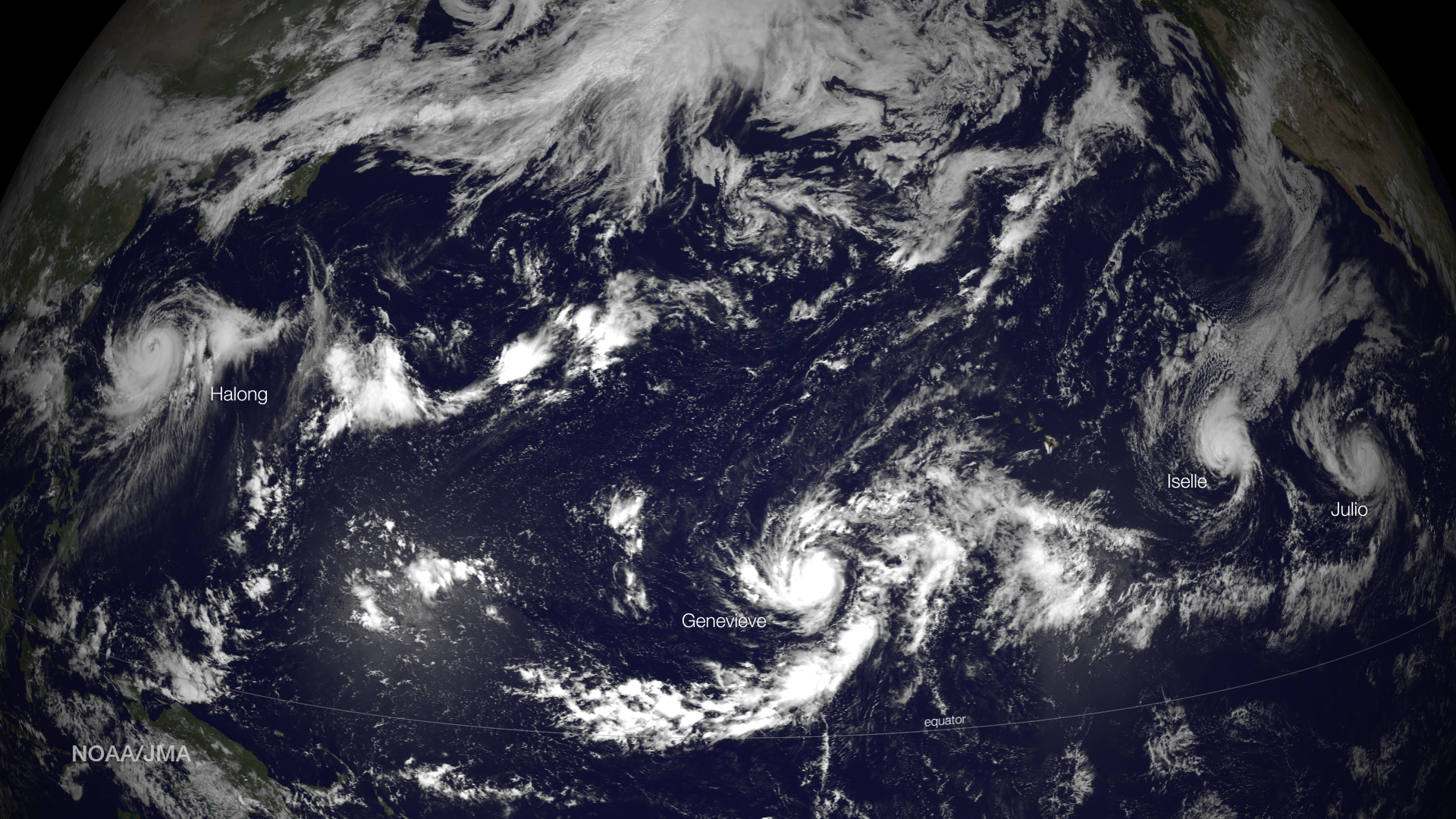Back from the Dead, Pacific Hurricane Becomes Super Typhoon

A week after forecasters wrote Genevieve off as dead, the tropical storm has barreled back to life, strengthening from a hurricane into a super typhoon as it crossed the International Date Line early this morning, Eastern Time (Aug. 7).
Genevieve's transition from hurricane to typhoon is a rare accomplishment for a Pacific tropical storm.
"It doesn't happen very often, but it does happen," said Dennis Feltgen, a meteorologist and spokesman for the National Hurricane Center in Miami. [50 Amazing Hurricane Facts]
Hurricanes born in the eastern Pacific, such as Genevieve, typically travel west into regions with cool water and/or high wind shear, either of which can destroy a storm. But thanks to this year's El Niño conditions in the Pacific Ocean, Genevieve was reborn as it trundled west, exploding to super typhoon strength in just two days. On Tuesday (Aug. 5), the storm hit warm water and favorable wind conditions that fueled its growth, similar to warming up a cold engine.
Hurricanes and typhoons are regional names for the same type of storm, Feltgen explained. A hurricane is a tropical storm that rages in the northeast Pacific east of the date line, or in the South Pacific Ocean east of 160 degrees east longitude. West of this imaginary north-south dividing line, in the northwest Pacific, the storm is called a typhoon. (Southwest Pacific storms are called tropical cyclones.)
A super typhoon is equivalent to a category 4 or 5 hurricane. Meteorologists rank both storm categories by wind speed. For a super typhoon, sustained wind speeds are at least 150 mph (241 km/h), while a category 4 hurricane must hit 130 mph (209 km/h).
The last time a Pacific hurricane turned into a typhoon by leaping the date line was in 2006, when Hurricane/Super Typhoon Ioke traversed the Pacific for 17 days on a journey from Hawaii to Alaska. In 2002, Hurricane Ele also crossed the date line and became a typhoon.
Get the world’s most fascinating discoveries delivered straight to your inbox.
But neither of these storms traveled as far as Genevieve or the current record holder for distance, 1994's Hurricane/Typhoon John. The longest-lived tropical storm ever seen, John wandered across more than 7,100 miles (11,425 kilometers) of the Pacific Ocean, and lasted for 31 days.
Genevieve formed July 25 about 1,500 miles (2,415 km) south-southeast of Hawaii, in the eastern Pacific Ocean. The storm is forecast to remain over open ocean and will not make landfall.
This year's El Niño-driven warmth and weak wind shear (changes in wind direction and speed at different altitudes) has sparked an active storm season in the Pacific Ocean, in line with the National Oceanic and Atmospheric Administration's official hurricane forecast.
Genevieve is the sixth hurricane of 2014, and the fourth major hurricane in the eastern Pacific so far this year. Further west, four super typhoons and six typhoons tore through the other side of the ocean this year, including Genevieve. During the 1997 El Niño, a record 11 super typhoons hit the western Pacific.
August is typically the most active month for tropical storms in the central Pacific, according to the National Hurricane Center. Many of these storms get their start in the eastern Pacific Ocean.
"One of the signs of an El Niño is an active Pacific basin and a below-average Atlantic basin, and that certainly seems to be occurring right now," Feltgen told Live Science.
Email Becky Oskin or follow her @beckyoskin. Follow us @livescience, Facebook & Google+. Original article on Live Science.

 Live Science Plus
Live Science Plus






